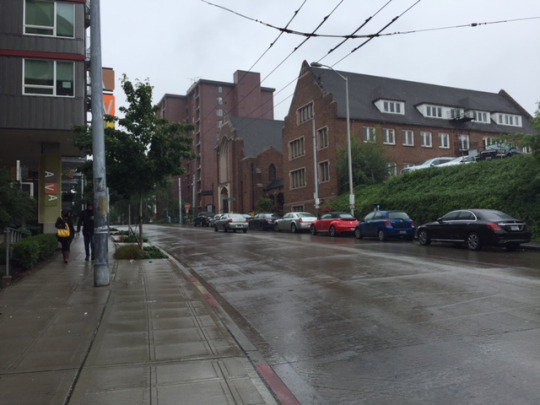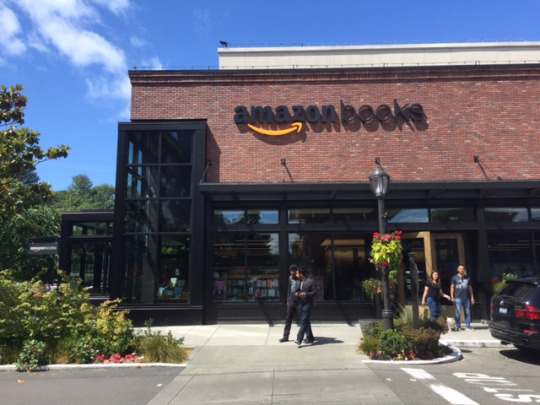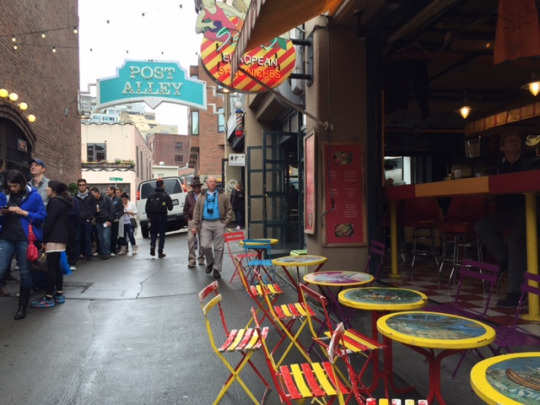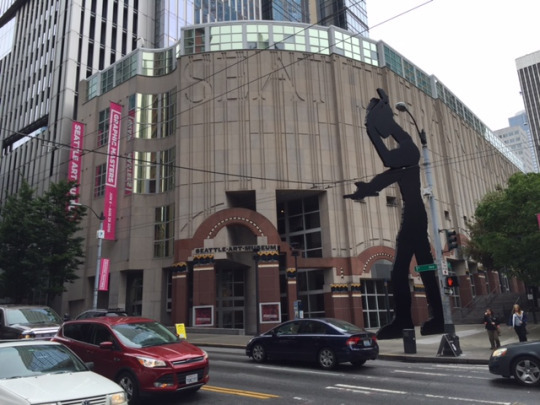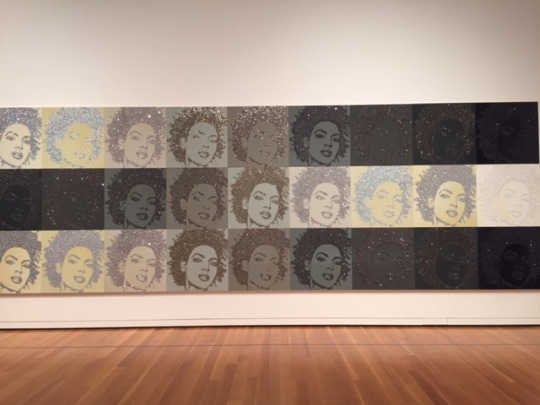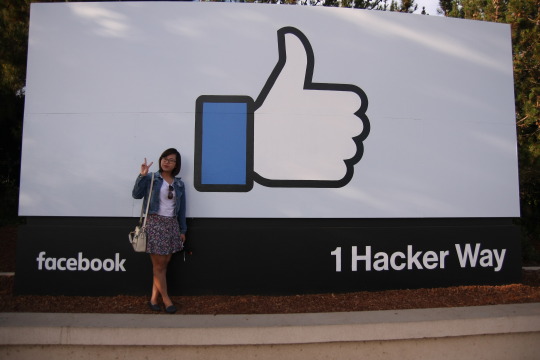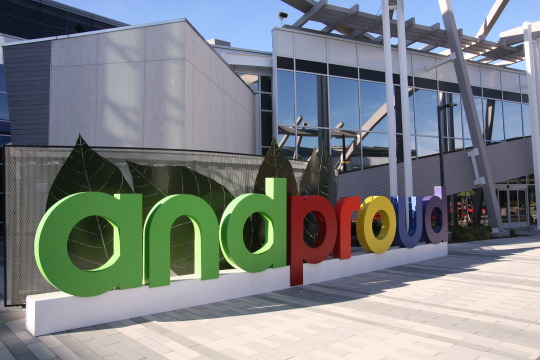Relating posts:
How to get internship in the US for international students: Link
How to get jobs in the US for international students (Post-MBA): Link
Note: Trong bài đôi khi có sử dụng vài từ tiếng Anh do tiết kiệm thời gian đánh máy hoặc chưa tìm được từ tiếng việt phù hợp.
Đối với hầu hết sinh viên Việt Nam việc apply các khóa MBA tại Mỹ là một việc khó khăn đòi hỏi sự kiên trì, tập trung. Với mình cũng không phải là ngoại lệ. Mình cho rằng apply MBA là một chặng đua dài, trong đó người nhanh nhất chưa chắc đã là người chiến thắng, mà người chiến thắng là những người bền bỉ bám chắc mục tiêu nhất. Mục tiêu của mình là đi phải có học bổng toàn phần, học tại trường trong top 50, và khu vực phát triển để tiện kiếm job sau khi học xong. Bản thân mình apply MBA trong 2 năm 2013 và 2014.
Năm 2013, được coi như là bước tập dượt rèn luyện với mình. Mình nộp hồ sơ 5 trường University of Minnesota (#36); TCU(#79); Thunderbird(#81); University of Rochester (#38), University of Missouri (#70) và cũng có được admissions từ Thunderbird (trường này có cho mình học bổng $55,000), Missouri, và Rochester. Nhưng mình quyết định không đi học do nếu trừ học bổng thì mình vẫn phải bỏ ra khoảng $50,000 cho học phí và chi phí ăn ở trong 2 năm.
Năm 2014, mình apply 6 trường Washington St Louis(#26); Boston U (#40), George Washington U (#53), William and Mary (#59); Willamette U (#81), Bentley U (#100). Mình bị fail Washington St Louis.các trường khác đều admissions và cho mình scholarship( around $60,000/2 years). Đặc biệt William and Mary và Willamette U cho mình học bổng toàn phần. Phần dưới mình sẽ chia sẻ rõ hơn tại sao mình lại chọn các trường đó, và quyết định cuối cùng là đi trường nào.
Dưới đây là bài tổng hợp kinh nghiệm apply học bổng MBA tại các trường ở Mỹ năm 2014, mình viết như một hình thức để nhìn lại chặng đường mà mình đã trải qua, và tiện chia sẻ cho các bạn khác cũng đang có ước mơ lấy học bổng MBA tại trường đại học Mỹ.
I. Sơ lược về bản thân:
Background: B.A.A tại trường ĐH Kinh tế quốc dân, Hà Nội. Chuyên ngành Quản trị nhân sự.
GPA: 8.14/10. Tốt nghiệp bằng Giỏi (Distinction Degree)
Kinh nghiệm: 05 tháng làm research cho trường undergrad + 3 năm post-grad ( bao gồm: 2 năm làm HR specialist cho a local bank; 1 năm làm headhunter cho một international recruitment firm).
GMAT: 680 (49Q, 32V)
IELTS: 7.5
Awards: NEU’s scholarships; 3rd prize Student Scientific Competition at NEU
Extra-activities: some volunteering activities for a global volunteering organization.
II. Quá trình chuẩn bị
a. GMAT
Mình thi 2 lần. Lần 1:660; lần 2: 680. Mình aim điểm trên 700, nên số điểm không làm mình thực sự hài lòng. Trước mỗi lần mình ôn thi trong khoảng 1 tháng rưỡi. Thời gian gấp gáp nên mình nghĩ đó cũng là nguyên nhân khiến điểm GMAT chưa cao như mong muốn.
Tuy nhiên mình nghĩ kinh nghiệm học ôn thi trong thời gian ngắn lại khiên mình tận dụng tối đa thời gian và đưa ra lịch học tương đối hiệu quả đối với mình.
Một ngày ngoài 8 tiếng đi làm và các nhu cầu ăn uống, ngủ tối thiểu ra, mình dành khoảng 4 – 5 tiếng để học GMAT. Sáng mình dậy học từ 6h30-7h30. Tối thì mình học từ 8h30-1h sáng.
Sách tham khảo:
– Official Guide
– Trọn bộ Manhattan
– Kaplan
– Hot Chilli (Quant)
– Một số tài liệu cóp nhặt không chính thống: bộ 31 GMAT test, 1000 SC, 1000CR &RC.
– Trang web tham khảo: gmatclub; beatthegmat..
Phân bổ thời gian ôn:
Tuần 1:
– Đọc toàn bộ lý thuyết về các phần thi verbal, và quantitative trong quyển Official Guide. Mình cứ chia ra 2 ngày cho từng mục: Sentence Correction, Critical thinking, Reading comprehensive và 1 ngày cho Quantitative. Lưu ý là đọc đến đâu note lại các ý chính mà mình cho là quan trọng
– Lý do: Mình đọc toàn bộ như thế là để mình có cái nhìn tổng quát về GMAT và hiểu được cốt lõi của từng phần câu hỏi. Điều này khiên sau đó khi mình đi vào chi tiết từng phần dễ hiểu vấn đề hơn rất nhiều.
Tuần 2 + Tuần 3 + Tuần 4:
– Mỗi tuần mình nghiên cứu trọng tâm vào từng mục tuần 2 -SC, tuần 3- CR, và tuần 4-RC.
– Mỗi tuần mình dành 2 ngày đầu để nghiên cứu kỹ từng dạng câu hỏi nhỏ trong các mục đó, và ghi chú cẩn thận tip làm. Ví dụ: SC thì mình sẽ chia ra làm 8 dạng lỗi hay gặp như về relatives; S-V agreement, idioms…Cũng vì cách học theo từng dạng, tip như thế nên mình đặc biệt sử dụng bộ Manhattan Guideline như là bible vậy :))
– Trong 5 ngày tiếp theo thì mình mình tập trung vào luyện tập. Với SC, mỗi ngày mình cố gắng làm 50 câu. Với CR và RC mỗi ngày mình cố gắng hoàn thành 30 câu bởi vì thông thường tốc độ trong thi GMAT thật là làm SC 1,5minute/1 sentence; và CR & RC thì khoảng 2minutes/1 sentence.
Thế tại sao một ngày mình lại mất tới 4 -5 tiếng để học, trong khi nếu tính thời gian làm các câu hỏi kia chắc chỉ mất khoảng 1 tiềng. Lý do làm sau khi đọc xong và check đáp án thì mình ngồi đọc toàn bộ phần giải thích trả lời của các câu đó. Các tìm câu trả lời rất đơn giản: copy câu đó, paste vào google>>> link ra đáp án và giải thích tại gmatclub
Cách làm này khiến mình có thể hiểu được các ra đề GMAT, các cách phân tích theo tư duy GMAT và nhớ rất lâu. Về sau thậm chí đọc một câu SC hay CR nhiều khi lướt qua là mình biết câu nào đúng câu nào sai, dù nhiều khi chưa hiểu hết nghĩa.
Tuần 5+ Tuần 6
– Mình dành 3 ngày đầu trong tuần 5 để học ôn Quant. Vì mình cũng học tốt các môn về số học bên Quant, mình không đầu tư quá nhiều thời gian. Chỉ học các dạng mẫu câu, và nhớ công thức.
– Thời gian còn lại của tuần 5 và tuần 6 mình dành toàn bộ cho việc làm đề. Mỗi ngày mình làm 1 đề, trừ thứ 7 và CN là 2 đề trong bộ tài liệu 31 GMAT tests.
– Khoảng 3 ngày cuối trước khi đi thi mình có mua một gói làm đề thi thật. Hết khoảng $30 gì đó( Bạn mình đăng ký nên mình không nhớ rõ. Có thể vào mba.com để biết thêm chi tiết). Vì mình share account với 2 bạn nữa nên chỉ mất có 300k/1 người. Với gói này mình có thể làm 4 đề thi. Kết quả khá là giống thi thật. Mình làm đề thi thử thì 1 lần được 690, 1 lần 670, 1 lần được 720. Đến khi thật mình được 680
Kinh nghiệm đúc rút:
– Đặt ra lịch trình học ôn một cách rõ ràng. Phân chia thời gian đặt mục tiêu theo từng ngày. (Cố gắng lượng hóa các mục tiêu đó>> dễ measure)
– Ôn thật focus và stretch. Bám chặt hoàn thành lịch trình ôn tập đã đề ra.
– Cố gắng ôn trong khoảng thời gian 2-2tháng rưỡi trước khi thi là hợp lý. Với những bạn nền tiếng anh chưa tốt thì thậm chí là nên dành 3-4 tháng để ôn. Như mình vì ôn thi quá gấp nên kết quả chưa thực sự hài lòng mĩ mãn
b. IELTS
Sau khi thi xong GMAT vào giữa tháng 10/2014 thì mình phát hiện ra là điểm tiếng anh của mình hết hạn. 😦 Lúc đó mình phân vân nên có cố ôn thi tiếng anh để apply năm nay hay là từ từ sang năm mới apply. Thời hạn apply sắp tới mà cứ lung bung và mình không rõ làm sao mà mình chưa viết hồ sơ, chưa có điểm tiếng anh thì sao nộp kịp. Nhưng cuối cùng sau khi cân nhắc mình quyết định là sẽ cố gắng ôn thi và nộp hồ sơ trong năm 2014.
Mình dành thời gian ôn thi trong vòng khoảng 1 tháng, và chủ yếu là làm đề vì các kỹ năng tiếng anh của mình tương đối ổn từ trước đó ( mình từng thi TOEFL ibt 95 điểm). Mình tập trung xem về phần Speaking và Writing, 2 phần này khác nhiều format của Toefl ibt. Còn listening và reading thì mình tập làm luôn đề.
Speaking:
– Nghiên cứu kỹ Sách Mat Clark Ielts Speaking
– Luyện tập các mẫu câu hỏi dự thi, có thể search download dễ dàng trên Google. Mỗi ngày mình cố gắng tập nói khoảng 2 đề trong bộ Cambridge.
– Mình rút ra là speaking muốn được điểm cao có mấy lưu ý:
+ Trừ Speaking part 1 ra thì các câu trả lời của Part 2 và Part 3 đều cố gắng theo sườn: 1-2 câu chủ đề; sau đó các supporting ideas hoặc reasons, và 1 câu kết luận. Cách nói này khiến mình follow các câu trả lời dễ hơn.
+ List ra các câu để mở đầu, chuyển ý, các thành ngữ hay dùng để nói trong quá trình luyện tập
+ Muốn điểm speaking cao thì ngoài sử dụng một số từ khó, thì cũng cần đa dạng mẫu câu sử dụng. Câu mệnh đề tính ngữ which, that, when, where, who…; các câu điều kiện if…; và các câu phức sử dụng eventhough, although..
Writing:
– Đọc các tài liệu Writing strategy for Ielts của Bích Dũng; Writeright; Writing Ielts band 8-9. Nói chung là mình đọc nhiều các bài essays, để tự rút ra cách viết cho mình.
– Trong tài liệu Writing strategy có ghi rất rõ các tips viết để được điểm cao.
– Dựa vào tài liệu đã đọc, mình viết template cho từng Task 1 và task 2 trong writing. Tới khi thi thì nhớ template, thêm ý và supporting details sẽ dễ hơn nhiều.
– Cố gắng viết luyện được khoảng 5 bài task 1, 5 bài task 2 trước khi thi.
Reading + Listening:
– Làm toàn bộ Cambridge 1-9. Cố gắng khi nào đạt mức mỗi bài sai từ 1-5 câu thì khi thi khả năng điểm từ 7.5 trở lên là rất cao.
Kinh nghiệm đúc rút:
– Tập trung vào làm đề Cambridge và các tips các bạn thi trước đúc rút lại, từ đó đưa ra các tips, template cho riêng mình
– Với các bạn tiếng anh tốt rồi thì ôn khoảng 2-4 tuần là ổn rồi.
c. Chọn trường
– Nên chọn các trường ở phía Đông, hoặc các trường phía Nam. Tránh các trường khu vực miền Trung hoặc phía Tây. Bởi vì các trường phía Đông, và phía Nam kinh tế phát triển hơn, cơ hội xin internship và job sau khi học xong sẽ nhiều hơn.
– Dựa vào hồ sơ của mình, mục tiêu, chọn trường có dải lớn. Bao gồm safe schools, right schools và stretch schools.
Ví dụ như mình mục tiêu là nộp trường có thể cho full- scholarship, ở khu vực phía đông, nên với hồ sơ của mình, mình chú tâm các trường ở top 50. Các trường top cao hơn thì là top 20. Và một vài trường là top 100.
– Chọn trường theo ngành học. Vì mình tập trung vào entrepreneurship, nên mình sẽ ưu tiên các trường có concentration on entrepreneurship.
– Nên chọn các trường thân thiện, từng có người VN học rồi, nếu có good records thì càng tốt. Thì sẽ dễ cơ hội được admissions hơn.
d. Essays
Một essay sườn chung cho các trường.
– Thường thì các trường sẽ có một câu hỏi chung về career goals, why MBA, why school. Nên cần nghĩ ra một câu chuyện dựa trên kinh nghiệm của mình để trả lời câu hỏi tại sao bây giờ muốn đi học MBA, học MBA trong mảng gì và sau đó làm gì với bằng MBA đó.
– Nên bắt đầu càng sớm càng tốt. Không nên đợi có tất cả các GMAT, và tiếng anh rồi mới bắt đầu viết. Như bản thân mình thì từ khoảng đầu tháng 9, khi mình muốn apply MBA mình đã bắt đầu nghĩ về ý tưởng cho bài essay của mình.
– Essay phải chân thực, dựa từ những kinh nghiệm thực tế của mình để viết lên, vấn đề cốt lõi là sắp xếp các mảng kinh nghiệm đó với mục tiêu tương lai của mình một cách hợp lý, và convincing.
– Có thể dùng ngôn từ viết sau cho cảm thấy mình là người ambitious và sống purposive, những điều mình làm rất dáng kể. Nhưng tuyệt đối không nên make-up, nói không thành có bởi vì adcom rất tinh với các bài viết như thế.
Tailor essay cho từng trường
– Sau khi có essay dàn cho các trường thì với mỗi trường lại phải tailor khác đi để phù hợp với culture , các điểm unique của trường đó.
– Tập trung nghiên cứu về trường để viết một cách chi tiết. Ví dụ: thích môn học nào của giáo sư nào, chương trình gì đặc biệt, trung tâm gì của trường, văn hóa cảm thấy phù hợp ra sao
e. Recommendation.
– Tìm 2 người có thể làm recommender cho mình thật sớm, cùng thời điểm bắt đầu start essay.
– Viết letter recommendation không phải là chỉ liệt kê các tính tốt, mà phải có các dẫn chứng để nổi bật điểm đó.
– Học MBA thường thì strong candidate có các traits sau cố gắng nhờ recommender mention trong thư: leadership, critical thinking, analytical thinking, initiative, passion, purposive, communication skill.
III. Phỏng vấn
Sau khi hồ sơ được submit xong và may mắn được mời phỏng vấn. Thì thành công của việc được admission đã được đến 40% rồi. Nhưng phần quyết định là phỏng vấn.
Trong buổi phỏng vấn interviewer thường check 3 điều ở ứng viên: motivation, previous experience và matching personalities.
a. Motivation.
– Interviewer sẽ check về mục đích đi học của ứng viên, mức độ nghiêm túc thế nào, career goals thế nào, đã tìm hiểu rõ về trường chưa.
b. Experience
– Interviewer sẽ check về kinh nghiệm từ trước đến nay của ứng viên, thành tích ứng viên đã đạt được, các hoạt động ngoại khóa. Thông qua đó để xác định potential leadership của ứng viên
c. Matching personalities
– Interviewer sẽ check về traits của ứng viên xem phù hợp với culture của trường hay không. Thường thì các trường rất thích các ứng viên: ambitious, integrity, sharing,, open-minded, self-development, challenging, detail-oriented.
Các câu hỏi thường gặp:
– Walk me through your resume
– Tell something about yourself that not include in resume
– Why mba, why now, why the school
– Career goals: long term and short-term
– Tell about time when you lead, time when you fail
– Your strengths and weakness
– Describe when you have a integrity dilemma
– What make you a strong MBA candidate
Kinh nghiệm đúc rút:
– Trả lời trước các câu hỏi thường gặp, viết ý chính ra, và luyện tập trước buổi phỏng vấn.
– Đọc lại toàn bộ application package của mình trước khi interview, tránh trường hợp hồ sơ nối một đằng trả lời một nẻo
– Mock interview với những người có khả năng tiếng anh tốt, am hiểu, nếu ai từng học MBA ở Mỹ rồi thì càng tốt.
– Cố gắng ăn mặc lịch sự, ngay cả là khi interview qua skype. Nên mặc sơ mi và khoác một cái áo vest bên ngoài ( bên dưới mặc quần đùi cũng được, cho thoải mái :)) ). Có thể bạn cho rằng nó hơi quá và không cần thiết nhưng rõ ràng là vẻ ngoài cũng đem lại good impression cho người đối diện.
Trên đây là những kinh nghiệm quá trình chuẩn bị hồ sơ MBA của mình. Phải nói là một quá trình painful. Nhưng vẫn có câu “No pain, no gain” mà. Cái cuối cùng, mình muốn chia sẻ đấy là apply MBA là quá trình xác định cố gắng bền bỉ. Không phải trong 1 tuần hay 1 tháng, mà nó là sự cố gắng cả 1 năm thậm chí là vài năm. Nhưng đến lúc đạt được thì vô cùng xứng đáng. Vì thế một khi đã xác định mục tiêu thì phải cố gắng và bám chắc mục tiêu ấy đến cùng. 🙂









